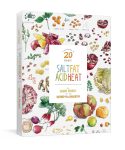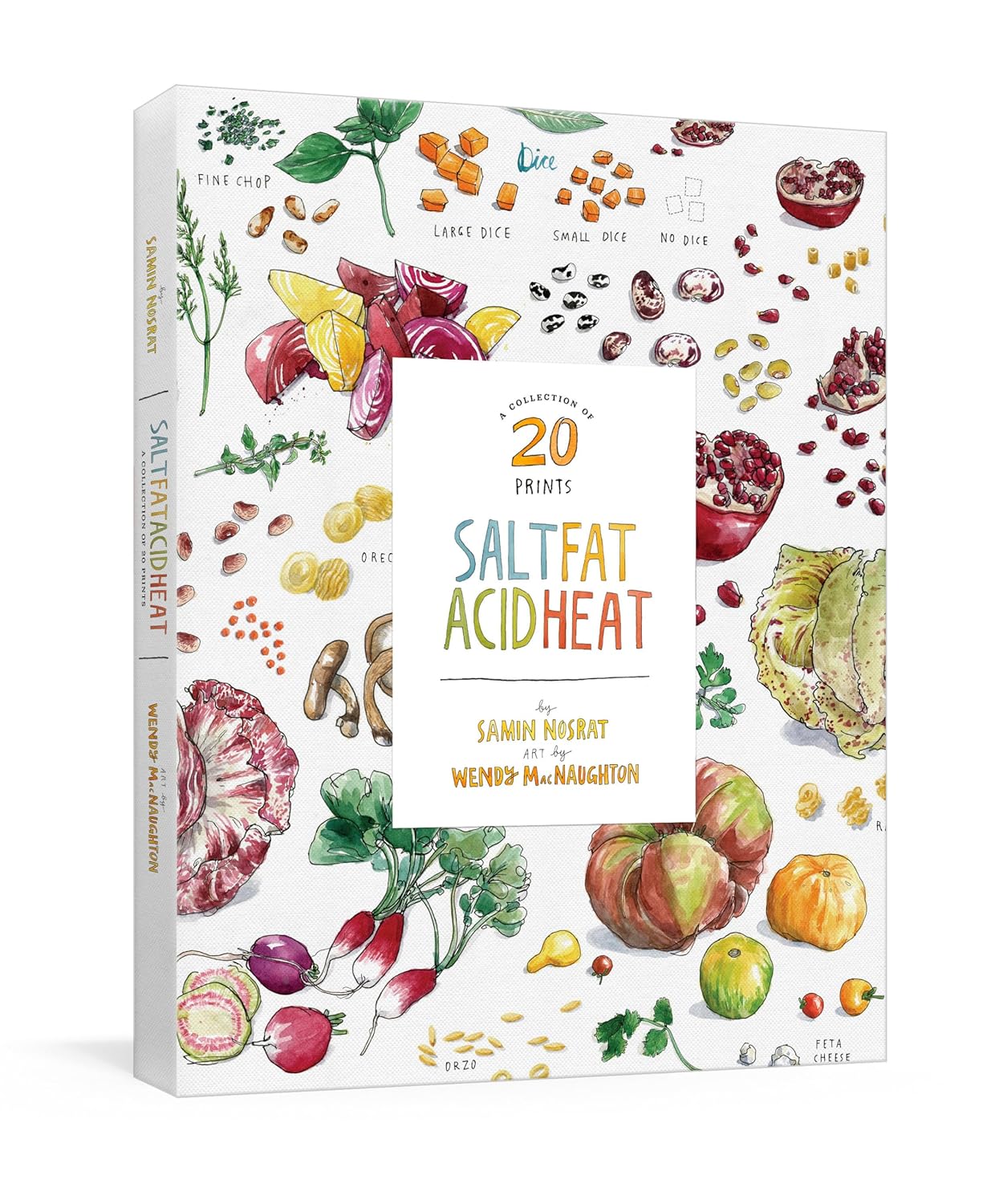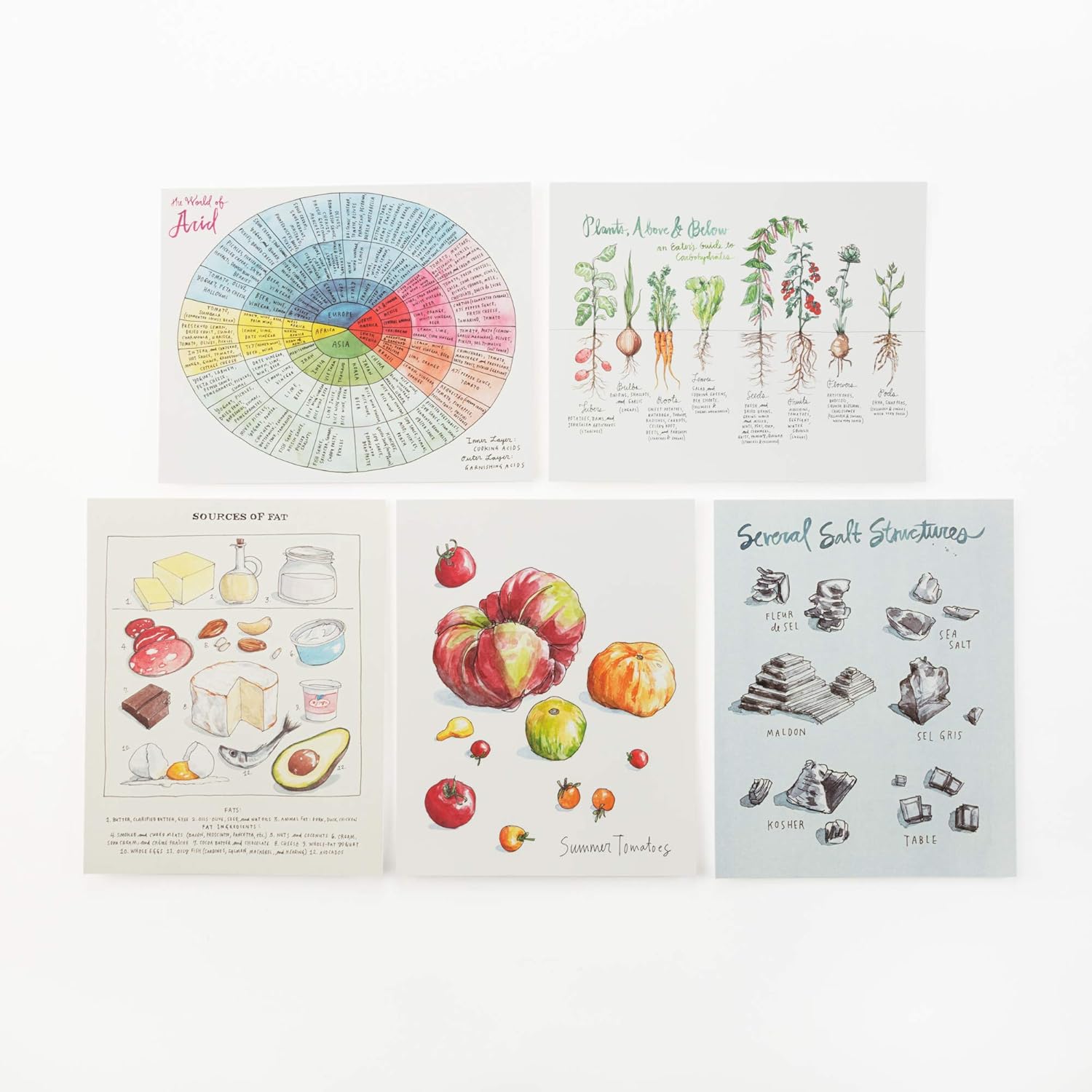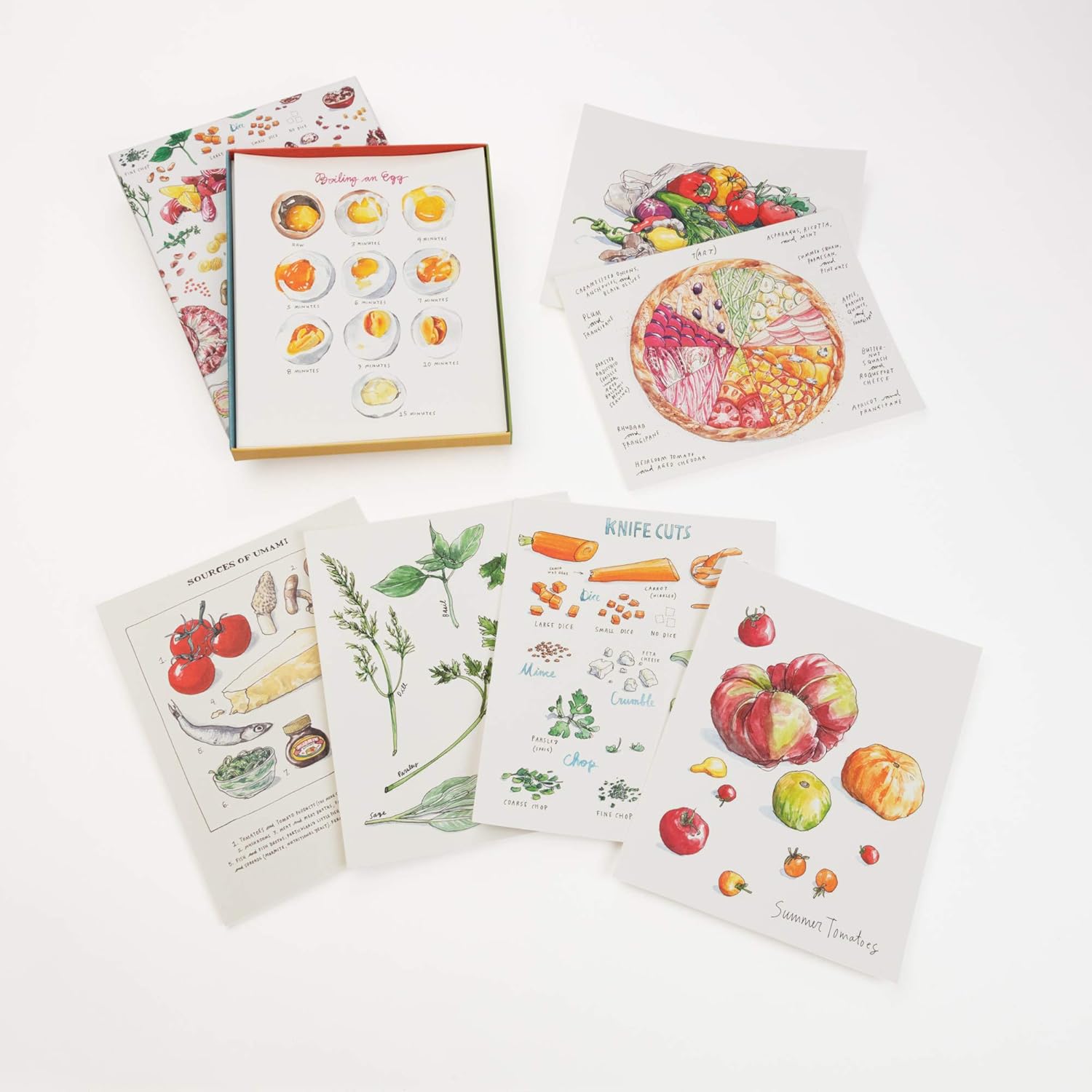
Salt, Fat, Acid, Heat: A Collection of Review salt fat acid heat Reading Guide – Oemiu
Salt, Fat, Acid, Heat: Mastering the Art of Cooking
Samin Nosrat’s “Salt, Fat, Acid, Heat” isn’t just a cookbook; it’s a culinary education disguised as one. It transcends recipes, focusing instead on the fundamental principles that underpin all good cooking. It’s a journey into understanding why certain dishes work, how flavors interact, and how to confidently adapt and create your own recipes. The book, and the accompanying Netflix docuseries, have revolutionized how many people approach food, shifting the focus from rote memorization of instructions to intuitive understanding of ingredients and techniques. This comprehensive guide delves into the core concepts, explores how to apply them in your kitchen, and offers a detailed roadmap for navigating this transformative culinary resource.
The Four Pillars of Flavor: Deconstructing Culinary Complexity
The genius of “Salt, Fat, Acid, Heat” lies in its elegant simplicity. By breaking down the seemingly endless world of cooking into four essential elements, Samin Nosrat provides a framework that anyone can use to improve their skills and confidence. Let’s dissect each of these components individually. Salt, often considered the most crucial element, enhances flavor, balances sweetness, and acts as a natural preservative. It draws out moisture from food, which can be both beneficial (think crispy chicken skin) and detrimental (consider over-salting a delicate sauce). The type of salt matters too. Kosher salt, with its coarse texture, is preferred for seasoning during cooking, while finer table salt is better suited for baking. Understanding the science behind salt allows you to control and manipulate its effects, resulting in dishes that are perfectly seasoned and balanced. The book details techniques for salting at different stages of the cooking process and explains how to adjust seasoning based on the ingredients and cooking method.
Fat, often demonized, is a crucial carrier of flavor. It adds richness, lubricates food, and contributes to texture. Different fats have different properties. Olive oil, with its distinct flavor profile, is ideal for Mediterranean cuisine. Butter, rich and creamy, excels in baking and sauces. Animal fats, like bacon fat or duck fat, impart a unique depth of flavor. The type of fat you choose can dramatically alter the outcome of a dish. “Salt, Fat, Acid, Heat” emphasizes the importance of understanding the smoke points of different fats, as overheating can lead to unpleasant flavors and potentially harmful compounds. Moreover, the book explores techniques for rendering fat from animal products, maximizing flavor, and minimizing waste.
Acid brightens flavors, balances richness, and adds complexity. Think of the squeeze of lemon juice on a grilled fish or the splash of vinegar in a salad dressing. Acids come in many forms: citrus juices, vinegars, wines, fermented products like yogurt and sour cream, and even certain fruits and vegetables. Each acid contributes a unique tanginess and aroma. Learning to use acid effectively is essential for creating dishes that are vibrant and well-balanced. “Salt, Fat, Acid, Heat” provides guidance on choosing the right acid for different dishes and offers tips for incorporating acid at various stages of the cooking process. It also highlights the importance of tasting and adjusting the acid levels to achieve the desired flavor profile. This is key to mastering cooking techniques for best results.
Heat, the final element, is the driving force behind all cooking. It transforms raw ingredients into edible dishes, altering their texture, flavor, and appearance. Different cooking methods utilize heat in different ways. Searing uses high heat to create a flavorful crust, while simmering uses gentle heat to tenderize tough cuts of meat. Roasting relies on dry heat to cook food evenly, while steaming uses moist heat to preserve nutrients. Understanding how heat affects food is crucial for achieving consistent results. “Salt, Fat, Acid, Heat” explores the science behind heat transfer and provides guidance on choosing the appropriate cooking method for different ingredients. It also emphasizes the importance of temperature control and offers tips for troubleshooting common cooking problems. By mastering the four elements of “salt, fat, acid, heat: the reading guide to culinary arts”, you gain the tools to create delicious and satisfying meals every time.
Navigating the Book and Applying the Principles
While the core concepts are foundational, understanding how to effectively utilize “Salt, Fat, Acid, Heat” as a resource is equally important. The book is structured in a way that encourages both learning and experimentation. It begins with a detailed explanation of each of the four elements, followed by sections dedicated to specific ingredients, cooking techniques, and recipes. Don’t feel obligated to read the book cover-to-cover. Instead, focus on the areas that are most relevant to your interests and skill level. If you’re struggling with searing meat, for example, turn to the section on heat and review the principles of dry-heat cooking. If you want to learn more about making vinaigrettes, explore the section on acid and experiment with different types of vinegars and oils. The beauty of “Salt, Fat, Acid, Heat” is that it provides a flexible framework for learning and allows you to tailor your approach to your individual needs and preferences.
Consider keeping a cooking journal to document your experiments and track your progress. Note the ingredients you use, the techniques you employ, and the results you achieve. Pay attention to how different variables, such as the type of salt, the temperature of the oven, or the acidity of the marinade, affect the final outcome. Over time, you’ll develop a deeper understanding of the principles of “Salt, Fat, Acid, Heat” and become more confident in your ability to adapt and create your own recipes. Another effective strategy is to focus on mastering one skill at a time. For example, you might decide to spend a week or two perfecting your vinaigrette-making technique. Experiment with different combinations of oils, vinegars, and seasonings until you find a combination that you love. Once you’ve mastered vinaigrettes, you can move on to another skill, such as roasting vegetables or searing meat. By breaking down the learning process into smaller, more manageable steps, you’ll avoid feeling overwhelmed and make steady progress toward your culinary goals.
Don’t be afraid to make mistakes. Cooking is a process of trial and error, and even the most experienced chefs make mistakes from time to time. When something doesn’t turn out as planned, take the time to analyze what went wrong and learn from your experience. Did you over-salt the dish? Did you undercook the meat? Did you use the wrong type of fat? By identifying your mistakes and understanding why they happened, you’ll be able to avoid repeating them in the future. Remember to taste as you go. This is crucial to ensuring that your dish is properly seasoned and balanced. Taste the ingredients before you add them, taste the dish as it cooks, and taste it again before you serve it. By tasting frequently, you’ll be able to adjust the seasoning and acid levels to achieve the desired flavor profile. Don’t rely solely on recipes. Use them as a starting point, but feel free to adapt them to your own tastes and preferences. Experiment with different ingredients, seasonings, and cooking techniques to create dishes that are uniquely your own. The ultimate goal of “Salt, Fat, Acid, Heat” is to empower you to become a more confident and creative cook.
The Netflix Series: A Visual Complement
The Netflix docuseries based on “Salt, Fat, Acid, Heat” is a visually stunning and engaging companion to the book. It brings the core concepts to life through vibrant cinematography, insightful interviews, and mouthwatering food photography. Each episode focuses on one of the four elements, exploring its role in different cuisines around the world. The series provides a deeper understanding of the cultural and historical context of cooking, and it showcases the diversity and richness of culinary traditions. Watching the series can be a valuable supplement to reading the book, as it provides a visual and auditory experience that can enhance your learning and deepen your appreciation for the art of cooking. While the book provides a detailed theoretical framework, the series offers a more visceral and emotional connection to the material. Seeing Samin Nosrat interact with chefs and home cooks in different countries, witnessing their passion for food, and learning about their culinary traditions can be incredibly inspiring. The series also provides practical tips and techniques that can be applied in your own kitchen. For example, you might learn a new way to season meat, a different method for roasting vegetables, or a unique approach to making vinaigrettes. By combining the theoretical knowledge from the book with the practical insights from the series, you’ll gain a more comprehensive and well-rounded understanding of the principles of “Salt, Fat, Acid, Heat”.
Consider watching the series with a notebook and pen in hand. Take notes on the key concepts, techniques, and recipes that resonate with you. Pause the video to examine the ingredients and cooking methods more closely. And don’t be afraid to experiment with the recipes and techniques that you see on screen. The series is designed to inspire you to get into the kitchen and start cooking. The Netflix series highlights how “salt, fat, acid, heat” principles translate across different cultures and cuisines. From Italian pasta making to Japanese miso production, the same foundational elements are at play. This global perspective reinforces the universality of the concepts and demonstrates that they are not limited to any particular style of cooking. By understanding these principles, you can adapt and apply them to any dish, regardless of its origin. The series is a testament to the power of simplicity and the enduring appeal of good food.
Adapting and Expanding Your Culinary Horizons
Once you have a solid understanding of the principles of “Salt, Fat, Acid, Heat”, you can begin to adapt and expand your culinary horizons. Start by experimenting with different ingredients and flavors. Try substituting different types of salts, fats, acids, and herbs in your favorite recipes. See how these substitutions affect the flavor, texture, and appearance of the dish. Don’t be afraid to take risks and try new things. The worst that can happen is that you make a mistake, and even mistakes can be valuable learning experiences. Another way to expand your culinary horizons is to explore different cuisines. Read cookbooks, watch cooking shows, and visit restaurants that specialize in different types of food. Pay attention to the ingredients, techniques, and flavors that are used in these cuisines, and try to incorporate them into your own cooking. For instance, if you’re interested in Thai cuisine, you might try adding fish sauce, lime juice, and chili peppers to your dishes. If you’re interested in Indian cuisine, you might experiment with spices like cumin, coriander, and turmeric. By exploring different cuisines, you’ll broaden your culinary repertoire and discover new flavors and techniques that you can use to enhance your cooking. The application of salt, fat, acid and heat can be seen in many diverse ways and it helps to experience this in many cuisines.
Consider taking a cooking class or attending a food festival. These events can provide you with valuable hands-on experience and allow you to learn from experienced chefs and food professionals. Cooking classes can teach you specific techniques, such as knife skills, sauce making, or pastry baking. Food festivals can expose you to a wide variety of different foods and flavors. They can also be a great way to meet other food enthusiasts and exchange ideas. Engage with the online culinary community. There are countless websites, forums, and social media groups dedicated to cooking and food. These online communities can be a valuable resource for finding recipes, asking questions, and sharing your own culinary experiences. You can also use these communities to connect with other cooks and learn from their expertise. By actively engaging with the online culinary community, you’ll stay up-to-date on the latest trends and techniques, and you’ll be inspired to continue learning and experimenting in the kitchen. Ultimately, the key to adapting and expanding your culinary horizons is to stay curious, be open to new experiences, and never stop learning. The “salt, fat, acid, heat” philosophy gives you the tools to explore and appreciate the infinite possibilities of cooking.
Comparing Salt, Fat, Acid, Heat with Other Culinary Resources
While “Salt, Fat, Acid, Heat” is a groundbreaking resource, it’s important to understand its strengths and weaknesses compared to other popular cooking resources. Many traditional cookbooks focus primarily on providing recipes, often with little explanation of the underlying principles. These books can be useful for replicating specific dishes, but they don’t necessarily equip you with the knowledge and skills to become a more confident and creative cook. “Salt, Fat, Acid, Heat”, on the other hand, prioritizes understanding over rote memorization. It provides a framework for thinking about cooking that can be applied to any recipe or ingredient.
Online cooking resources, such as websites and YouTube channels, offer a wealth of information and inspiration. However, the quality of these resources can vary widely. Some online sources are reliable and accurate, while others are misleading or even dangerous. It’s important to be discerning when using online resources and to verify the information you find with other sources. “Salt, Fat, Acid, Heat” provides a curated and authoritative source of information that you can trust. It’s also organized in a way that makes it easy to find the information you need. Culinary schools offer a more formal and structured approach to learning about cooking. However, culinary schools can be expensive and time-consuming. “Salt, Fat, Acid, Heat” provides a more accessible and affordable alternative to culinary school. It allows you to learn at your own pace and focus on the areas that are most relevant to your interests and skill level.
Ultimately, the best cooking resources are the ones that work best for you. Some people prefer to learn from books, while others prefer to learn from online videos. Some people thrive in a structured learning environment, while others prefer to learn through experimentation. “Salt, Fat, Acid, Heat” is a valuable resource for anyone who wants to improve their cooking skills, but it’s not the only resource available. Consider your own learning style and preferences when choosing cooking resources. “Salt, Fat, Acid, Heat” excels in teaching fundamental principles while many other books emphasize recipes. The following table provides a comparison across different aspects:
| Feature | Salt, Fat, Acid, Heat | Traditional Cookbooks | Online Cooking Resources |
|---|---|---|---|
| Focus | Fundamental Principles | Recipes | Varied (Recipes, Techniques, Tips) |
| Reliability | High (Authoritative) | Varies | Varies (Requires Discernment) |
| Structure | Well-Organized | Recipe-Based | Often Disorganized |
| Cost | Moderate (Book Purchase) | Moderate (Book Purchase) | Low to Free |
| Learning Style | Conceptual Understanding | Recipe Following | Flexible, Varied |
By understanding the strengths and weaknesses of different cooking resources, you can create a personalized learning plan that meets your individual needs and goals.
Frequently Asked Questions
What exactly is “Salt, Fat, Acid, Heat” about?
“Salt, Fat, Acid, Heat” deconstructs cooking into four essential elements, arguing that mastering these fundamentals is key to becoming a confident and intuitive cook. Salt enhances flavor and controls moisture. Fat carries flavor and adds richness. Acid balances flavors and provides brightness. Heat transforms ingredients and affects texture. The book and the Netflix series explain the science behind these elements and demonstrate how they interact to create delicious meals. It’s less about following recipes and more about understanding why recipes work. By grasping these core principles, you can adapt recipes, create your own dishes, and troubleshoot cooking problems with ease. The philosophy advocates for a more intuitive and less rigid approach to cooking.
How is the book structured, and what’s the best way to read it?
The book is divided into two main sections. The first section focuses on each of the four elements—salt, fat, acid, and heat—exploring their properties, functions, and applications in cooking. The second section delves into specific ingredients, techniques, and recipes, demonstrating how the four elements come together in practice. The best way to read it is to start with the first section to gain a solid understanding of the fundamental principles. Then, you can explore the second section based on your interests and skill level. Don’t feel pressured to read the entire book cover-to-cover. Instead, focus on the areas that are most relevant to your culinary goals. You can also use the book as a reference guide, dipping in and out as needed to answer specific questions or troubleshoot cooking problems. This is a useful reading guide to culinary arts.
How does the Netflix series complement the book?
The Netflix series brings the concepts from the book to life through visual storytelling and real-world examples. Each episode focuses on one of the four elements, exploring its role in different cuisines around the world. The series offers a deeper understanding of the cultural and historical context of cooking, and it showcases the diversity and richness of culinary traditions. While the book provides a detailed theoretical framework, the series offers a more visceral and emotional connection to the material. Seeing Samin Nosrat interact with chefs and home cooks, witnessing their passion for food, and learning about their techniques can be incredibly inspiring. The series also provides practical tips and techniques that can be applied in your own kitchen, making it a valuable complement to the book.
Is “Salt, Fat, Acid, Heat” suitable for beginner cooks?
Yes, “Salt, Fat, Acid, Heat” is definitely suitable for beginner cooks. In fact, it’s arguably more beneficial for beginners than for experienced cooks. The book’s focus on fundamental principles provides a solid foundation for building cooking skills. It demystifies the cooking process and empowers beginners to understand why certain techniques work. By learning the “why” behind cooking, beginners can avoid simply following recipes blindly and instead develop the ability to adapt and create their own dishes. The book also offers practical tips and techniques that are easy to understand and apply, making it an accessible and empowering resource for anyone who wants to learn to cook.
What if I don’t like the recipes in the book?
The recipes in “Salt, Fat, Acid, Heat” are intended to be illustrative examples of the principles discussed in the book, rather than definitive culinary instructions. If you don’t like the recipes, that’s perfectly fine. The book’s primary focus is on teaching you the fundamentals of cooking, not on providing you with a collection of recipes. Use the recipes as a starting point, and feel free to adapt them to your own tastes and preferences. Experiment with different ingredients, seasonings, and cooking techniques to create dishes that you enjoy. The ultimate goal is to use the principles of “salt, fat, acid, heat” to become a more confident and creative cook, not to replicate the recipes in the book exactly.
How can I apply the principles of “Salt, Fat, Acid, Heat” to my everyday cooking?
The key to applying the principles of “Salt, Fat, Acid, Heat” to your everyday cooking is to be mindful of the four elements in every dish you make. When seasoning food, think about the type of salt you’re using and how it will affect the flavor and texture. When choosing a fat, consider its flavor profile and smoke point. When adding acid, think about the type of acid you’re using and how it will balance the other flavors in the dish. And when applying heat, consider the cooking method you’re using and how it will affect the texture and appearance of the food. By consciously considering these four elements, you can make subtle adjustments to your cooking that will significantly improve the flavor and quality of your meals. Remember tasting is always important to enhance your cooking techniques for best results.
What are some common mistakes people make when using “Salt, Fat, Acid, Heat”?
One common mistake is focusing too much on the recipes and not enough on the fundamental principles. Remember that the recipes are just examples; the real value of the book lies in its explanation of salt, fat, acid, and heat. Another mistake is being afraid to experiment. Don’t be afraid to deviate from the recipes, try new ingredients, and see what happens. Cooking is a process of trial and error, and the best way to learn is by doing. A third mistake is neglecting to taste as you go. Tasting is crucial for ensuring that your dish is properly seasoned and balanced. Taste the ingredients before you add them, taste the dish as it cooks, and taste it again before you serve it. By avoiding these common mistakes, you can maximize the benefits of “Salt, Fat, Acid, Heat” and become a more confident and creative cook.




Price: $20.00 - $18.60
(as of Sep 13, 2025 06:33:47 UTC – Details)




